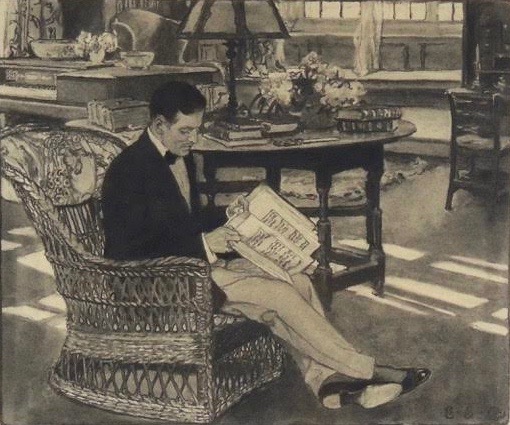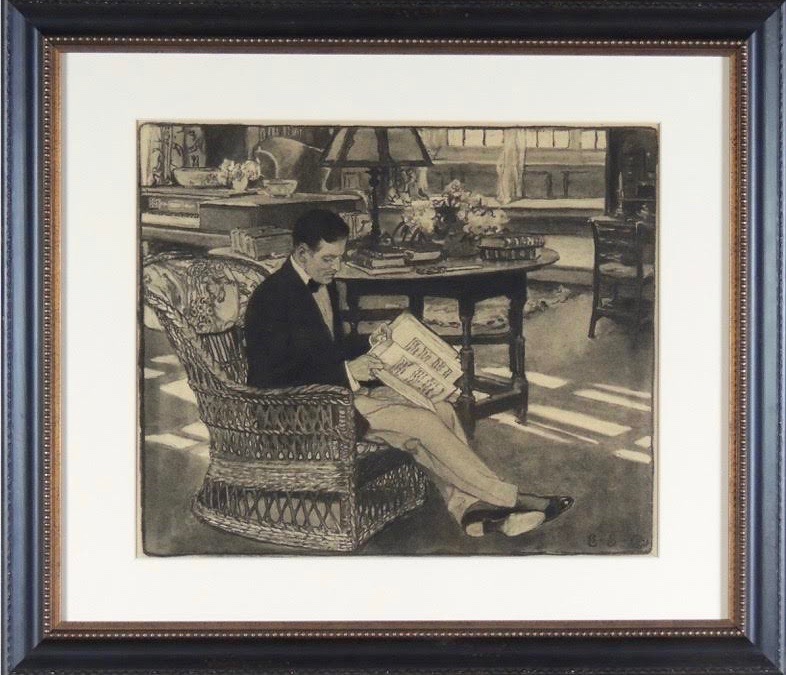""He Was Not Much Given To Reading"" Lot no. 3553
By Elizabeth Shippen Green (1871-1954)
1909 (Estimated)
12.25" x 15.00"
Charcoal and Wash on Board
Initialed Lower Right
REQUEST PRICE
PURCHASE REQUEST
Story illustration for “Endymion Uncut” by Arthur Stanwood Pier, published in Harper's Monthly, April 1909.
Illustrating a scene where the bored Dick Redfield picks up a valuable first edition copy of Endymion and begins cutting the leaves, thus depreciating the book's value and upsetting Helen, his host.
The full paragraph of the scene illustrated reads: “He was not much given to reading, but when he took up a volume of which the leaves were not cut and saw an ivory paper-knife lying convenient to his hand, there was but one thing to do. He always found an idle pleasure in cutting the leaves of a book. He was just completing the task when Helen entered."
Explore related art collections: Black & White / $5,000 - $20,000 / Magazine Stories / Women Artists / Newly Researched
See all original artwork by Elizabeth Shippen Green
ABOUT THE ARTIST
Elizabeth Shippen Green, later Mrs. Huger Elliot, was born in Philadelphia and studied at the Pennsylvania Academy of the Fine Arts with Robert Vonnoh and Thomas Eakins. She also studied with Howard Pyle at the Drexel Institute where she met Jessie Willcox Smith and Violet Oakley. The three became close friends and shared studios for many years.
Although Elizabeth did some early illustrations for The Ladies’ Home Journal and The Saturday Evening Post, as well as a number of books, for many years she was under exclusive contract with Harper’s Monthly. Her sensitive work is also decorative, with rounded edges and hand-hewn lines, similar in concept to that of stained glass windows. In a time when magazines used color very sparingly, a large percentage of her illustration work was reproduced in full color, which she handled brilliantly. Because she worked in a bold outline, her pictures reproduced equally well in color or in black and white.





